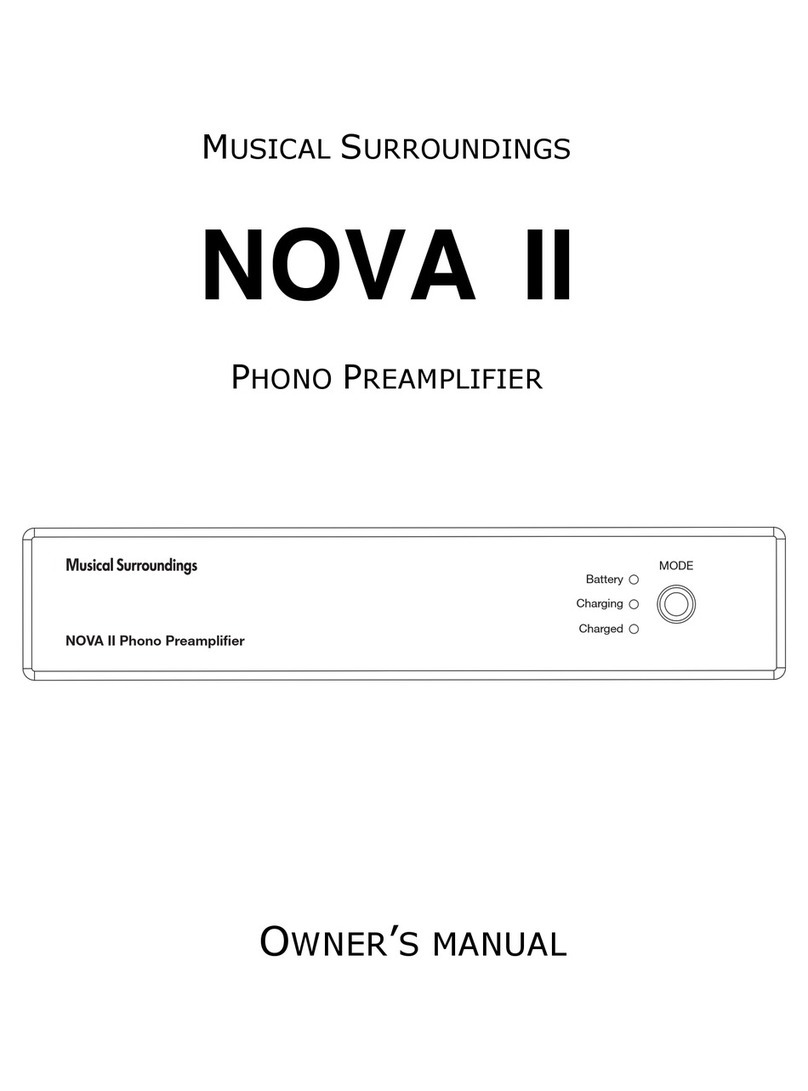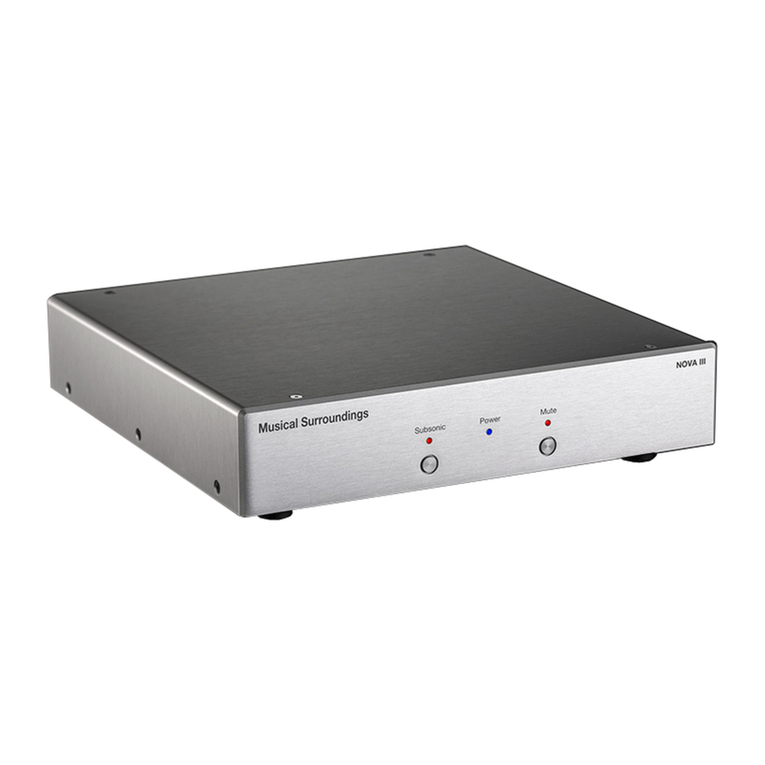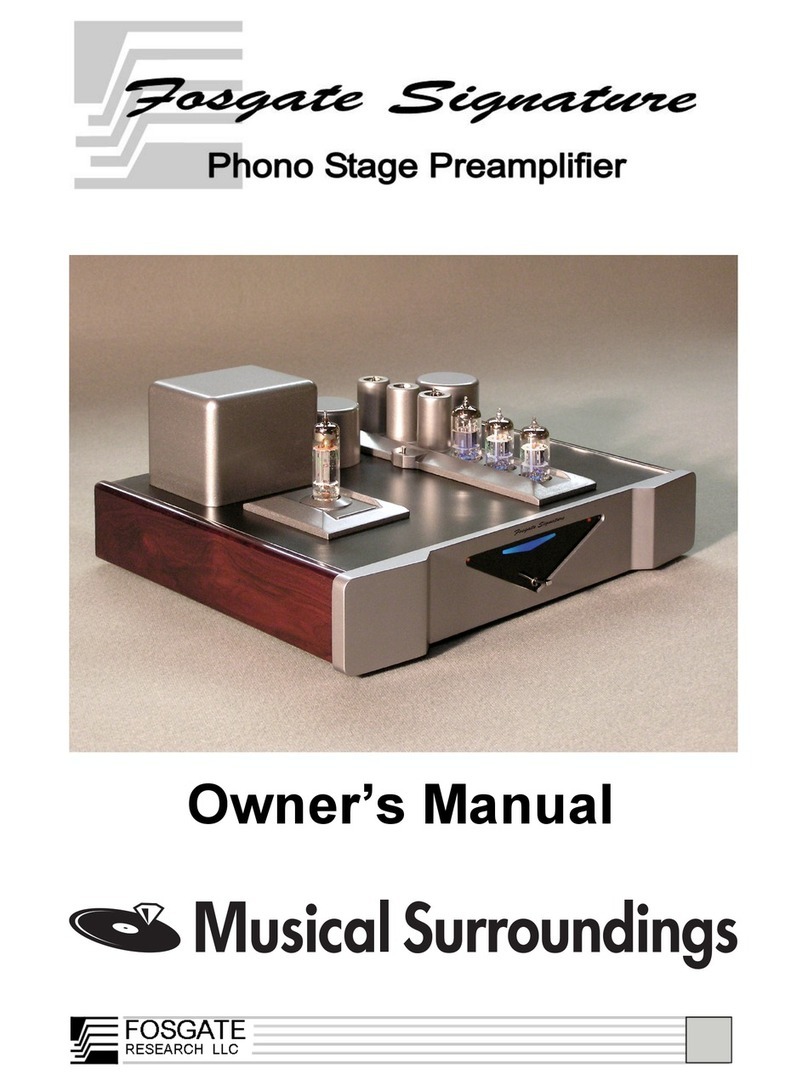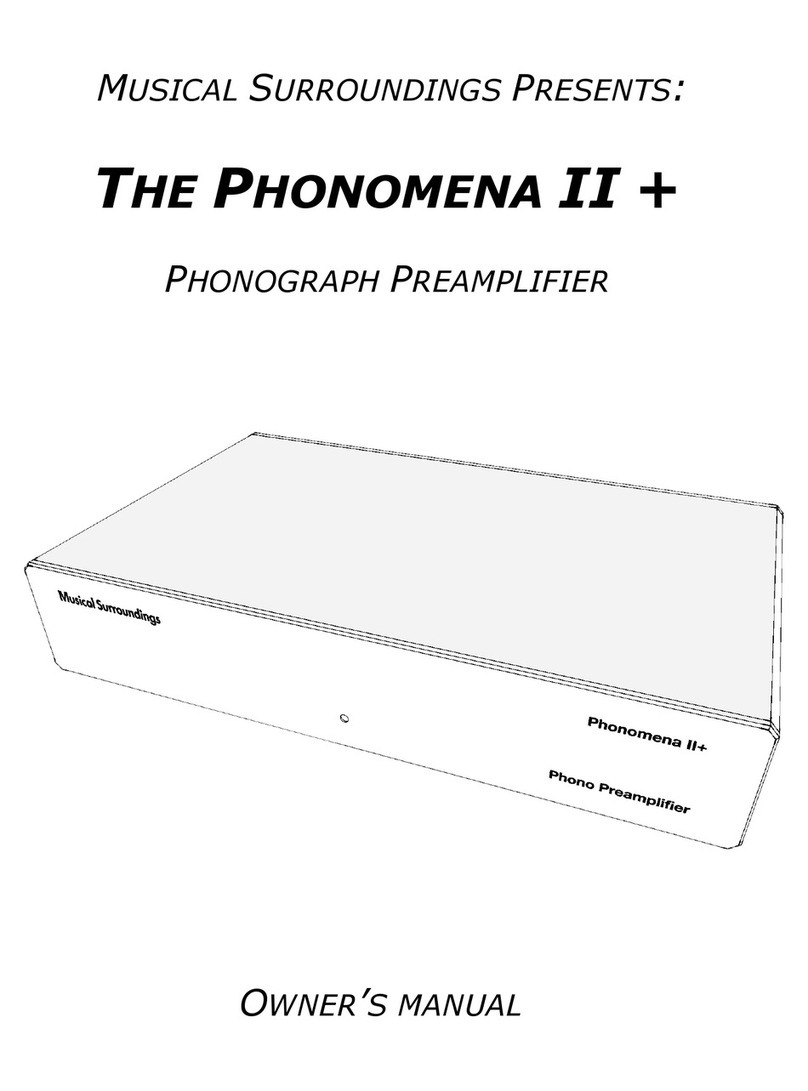Introducing: the SuperNova 2
The SuperNova 2 is an extremely versatile preamplifier that delivers an accurate,
rich, precise representation of recorded sound, allowing users to hear music as it was
meant to be heard. The SuperNova 2 accepts two phono cartridges and, if used in
Power Amp-Direct setup, an additional line-level input. The unit also has independent
Input Loading and Gain settings and comes with a Battery Power Supply that allows
the unit to run powered by four fully-rechargeable battery packs, which frees the
system from noise and distortion from AC power and improves the sound accuracy
even further.
.
The first decision to make is whether to connect the unit in the Standard
configuration (fixed or line-level output) or the Power Amp-Direct configuration
(variable output).
Standard configuration (fixed output)
•For reasons of convenience, many users will want to connect their SuperNova 2
so that it will deliver a line-level signal to a line-level destination.
•We call this the Standard configuartion.
•In this setup the SuperNova 2 might be one of several sources to be connected to
a standard line-level destination which controls volume and features.
•If the user requires a wider dynamic range of attenuation (i.e., for quieter
listening), the Standard configuration is recommended.
Power Amp-Direct configuration (variable output)
•Many users who listen primarily to just two source types (i.e., LPs and CDs), and
don’t mind having a system devoted to that, will prefer connecting the
SuperNova 2 directly to a power amp.
•We call this the Power Amp-Direct configuration.
•This setup eliminates the line-stage from the signal path for cleaner sound.
•Since most power amps do not offer independent volume control, the 11-step
Attenuator knob on the front panel serves as a volume control when in Power
Amp-Direct.
•Two phono inputs and one line-level input are allowed.
Overview of the setup process:
•Determine output preference and connect SuperNova 2 output jacks to their
destination.
•Connect input cables (from turntables or line-level source) to the appropriate
input jacks on the rear panel of the SuperNova 2. Secure any ground wire(s) to
the grounding lug.
•Set Input Loading and Gain for each source.
•Connect the SuperNova 2 by ribbon cable to the Battery Power Supply, which
connects to wall power via the supplied power cord.
•After powering up, fine-tune Input Loading, Gain and Attenuation (if needed).

































